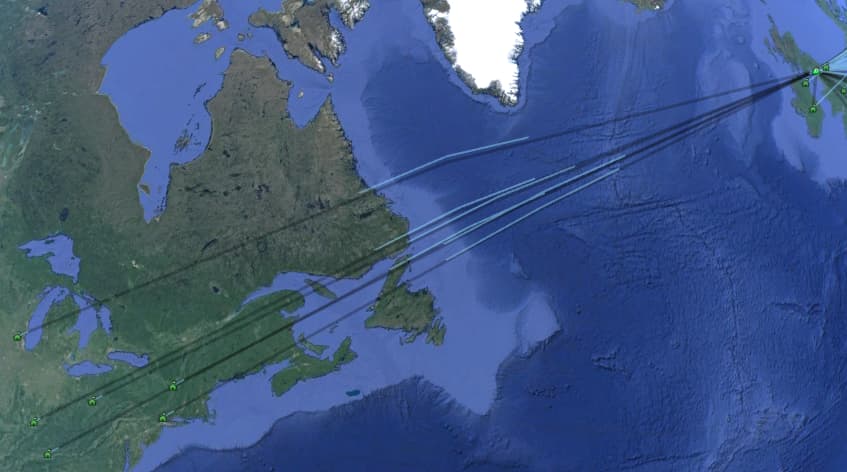I’ve done six 10m activations so far this year - all with 10W CW from a KX2 with internal ATU - and all from G/LD summits. The first five were with a 40/20/10 EFHW configured as an inverted-L or inverted-7 (not inverted-V) and today (on G/LD-037) with a Chameleon MPAS Lite vertical with two 8m counterpoises (yes, I know that’s longer than needed for 10m but I was working 30m afterwards).
(C) Google Earth 2024, radio paths courtesy www.adif.uk
Some of the six US chasers today were the same as on the previous 10m activations. I would be hard pushed to say whether the reports I gave (mainly 529 – 569) and received were any different with the vertical than with the EFHW. Unlike before I didn’t get any west coast chasers but that’s almost certainly because I activated more than an hour earlier (1323 to 1333 utc) than previously.
The S0 noise on 10m made it a joy to work even the weaker N/A stations despite my frozen fingers. With freezing temperature and a dusting of light snow today I certainly appreciated the quicker setup (with gloves on) of the MPAS vertical.
